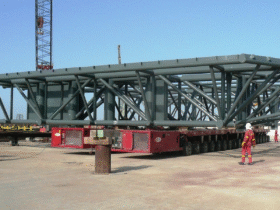The vast majority of people must pay more attention to the importance of e-waste.
According to the data, e-waste is officially the fastest-growing waste stream globally, with 62 million metric tons generated in 2022.
We’re living in a high-tech era where using technology is plain vanilla. Access to technology is so common that we’ve become part of a vicious cycle of buying and throwing.
We purchase electronic devices and discard them after they outlive their usefulness. These electronics derive their value from this usefulness, hands down.
However, when people think their devices are no longer useful, they cast them aside and contribute to the buildup of e-waste. The buildup leads the waste to reach junkyards, resulting in air pollution, water contamination, exposure to hazardous chemicals, and impact on vulnerable populations.
We should be careful about the health of Mother Nature and try to think out of the box. The well-intentioned act of fighting e-waste invites lots of benefits for the nation.

Source: https://www.freepik.com/free-vector/flat-design-circular-economy-infographic_21911819.htm#fromView=search&page=1&position=8&uuid=ae03cf4f-0971-4bed-8498-cd3bef3e6dbb
The Trump Card
The benefits of recycling e-waste have no end. From environmental protection to the conservation of natural resources, recycling gives you headroom to play a role in improving the circular economy.
What’s a circular economy? It’s an economic system developed on the regeneration of products to promote a greener environment and sustainability.
With the growth of such a prudent economic system, certain economic benefits emerge – among the benefits are reducing expenditure and creating employment.
Let’s discuss them one by one.
Reducing Expenditure
The valuable materials in e-waste include gold, silver, and copper. If the materials are recovered through recycling, mining new resources won’t be necessary, and cutting back on enormous costs will be exercised on a wider scale.
As stated in a report by the World Economic Forum, one million recycled cell phones produce 75 pounds of gold, 772 pounds of silver, and 33 pounds of palladium. The same report reveals the abundance of copper, aluminum, and iron in e-waste, stressing the significance of copper as it’s mainly used in electronics.
The expenditure is reduced in three areas:
1. Manufacturing
Recycled materials have the potential to be reintroduced into the manufacturing process. By doing so, authorities can avoid going for the original stuff. In addition to decreased production costs, stability in the supply chain is guaranteed because a steady source of materials is provided, thanks to the reintroduction.
2. Energy
Recycling materials from e-waste requires less energy than manufacturing new materials from raw ores. For instance, recycling aluminum saves up to 95% of the energy needed to manufacture it from bauxite ore. Thus, you economize on electric power and reduce energy bills.
3. Disposal
Traditional disposal methods don’t do the trick in terms of reducing expenditure. Responsible e-waste recycling is a far better option since it prevents businesses and municipalities from paying substantial fees for landfill use and dangerous waste management. Many companies have stepped forward as credible e-waste pickup facilities, and you’re free to contact them for a smooth and eco-friendly disposal.
Creating Employment

When the boom of the circular economy is imminent, job prospects increase.
Here’s how it happens:
Collection and Sorting
The first and foremost step of recycling e-waste involves the collection of discarded electronic devices. It brings jobs to facilities, such as logistics, transportation, and initial sorting.
The sorting facility is the next step once the collection is complete. Various types of e-waste have to be sorted, allocating each to a unique category, e.g., metals and plastics. The process calls for manual labor and automation. Hence, companies hire workers to handle the labor and operate automation.
Dismantling and Processing
Generally, e-waste is manually dismantled to separate valuable components from unsafe materials. It grants employment to skilled individuals who dissemble devices and sort the components. Subsequently, facilities process the separated materials to recover metals and other resources, and that’s when the technical roles of engineers and machine operators are yearned for.
Refurbishing and Reselling
Not all e-waste is beyond use. Numerous devices are repairable and can be refurbished, fostering occupation in repair shops and refurbishment centers. It extends the life of electronic devices and offers affordable alternatives for consumers. Refurbished devices are sold in secondary markets, expanding sales, marketing, and customer service designations.
Conclusion
E-waste recycling is not only an environmental necessity but also an economic outlook.
As the mounting waste stream, e-waste poses considerable challenges related to pollution and health risks.
By adopting sound recycling practices, we’ll have grounds for solving the prevalent issues and unlocking perks.
A circular economy is a great concept with some gaps to bridge. The measures we take from today onward will determine the economy’s integrity.












Leave a Reply